Oriental rugs are 100% hand-knotted rugs using all-natural plant & animal fibers, like silk, wool, and cotton. They
make fabulous floor coverings adding beauty, color, and warmth to the floor and uplifting the entire room’s look.
When you place one in any room, you wish it would last undamaged for the longest time. However, by their use, Oriental rugs and Persian Rugs are subjected to various damage-inducing experiences. They get walked over. Heavy furniture creates irreversible dents. Moths eat away at the fibers; of course, they are often at the receiving end of all kinds of spills.
While regular maintenance and cleaning keep your rug looking clean and good, there are some instances when professional rug repair and restoration are necessary to offset the effects of normal wear and tear over time.
The goal of rug repair is to prevent further damage or deterioration and preserve its beauty and value for several years to come.
Table of Contents
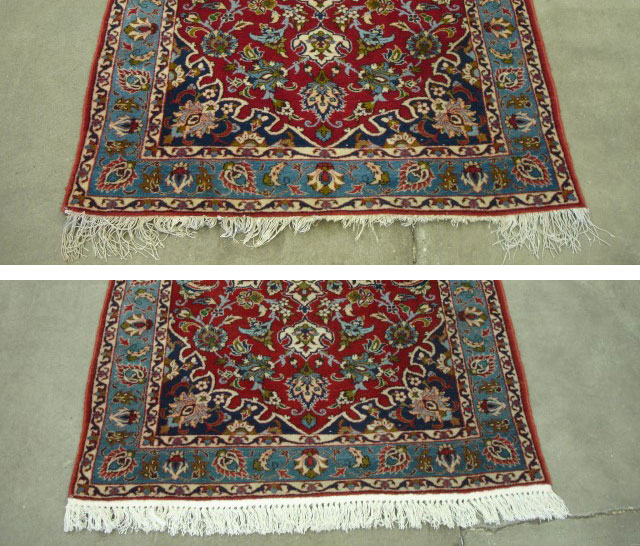
While regular maintenance and cleaning an keep your rug looking clean and good, there are some instances when professional rug repair and restoration is necessary to offset the effects of normal wear and tear over time. The goal of rug repair is to prevent further damage or deterioration of the rug and to preserve its beauty and value for several years to come.
My Oriental Rug is Damaged, What Should I Do?
1. Repair your Rug ASAP
In fact, getting your rug repaired in time is one of the key measures to maintain its beauty for the longest time. Timely repair can prevent a simple, cheap repair job from becoming a complex, expensive repair job.
Rug repairs should ideally be done as soon as you notice the damage. Ignoring it will only result in it getting worse. On the other hand, taking your rug in for regular repair and maintenance once in 5 to 10 years will keep it looking great for generations.
The important thing to make sure is that you choose a reputed rug repair professional even if it means having to pay a little bit more.
2. Take your Rug to a Rug Repair Professional
Reputed rug repair professionals will always take the trouble to procure the right kind of wool and matching dye and use the right weave so that the repair work complements the natural characteristics of the rug and does not go against its original character.
The master weaver will give you a detailed explanation of what needs to be done and the cost and will only go ahead with the work once you approve of the estimate.
Some of the more common damage that rugs undergo repair for are for tears, holes, frayed corners, re-dyeing of color, stretching, fringe repair, flood & fire damage, rug misalignment. An experienced rug repair craftsman can rebuild corners, mend holes and burns and also repair moth damage so that you cannot make out the difference between the original and the new repair work.
More likely than not, you will find that most experts quote quite a high rate for doing rug repairs. Don’t let that deter you. While it may seem like a lot, keep in mind that repairing a rug is time-consuming and very laborious. Moreover, it helps maintain the value of the rug so it is definitely worth it.
Some repair professionals of lesser repute may suggest that you can get the eroded or eaten away areas painted to hide the damaged areas. While this is cheaper it is not recommended as it can cause permanent damage to the rug and will reduce its overall value.
Does a Low Pile Mean It’s Time for Repair?
An oriental rug can develop areas of low pile over a period of time such as antique Persian rugs and when this happens, the only way to restore it to its original glory is to get it professionally repaired. Low pile is not so much of a problem as compared to damaged fringes or sides but an extremely low pile can expose the foundation and there can be some serious damage to the rug.
Some rug owners do not mind low pile as it is a sign of age and character and getting it repaired is just a matter of personal preference. Whether or not it is worth getting the rug repaired and re-piled depends on the level of use and the extent which the rug is worn. If the pile is so low that the foundation is visible, it is definitely in need of repair.
You should know though that due to the nature of the repair, it is not always possible to obtain an exact match in color although a master weaver will make every effort to make as close a match as possible.
Common Repairs for Oriental Rugs
Repairing the Sides of the Rug
The sides of the rug refer to the two sides without a fringe that runs along the length of the rug. Oriental rugs are typically woven from side-to-side across the warp strings, which means there has to be an end point. The weaver generally ties the end point when the weaving is completed and this tied-up end point does the job of maintaining the rug’s shape and also prevents unraveling of the knots.
Over a period of time, this end tends to become loose and start opening out which keeps getting worse if nothing is done to stop it. The longer the problem is left unattended to, the more extensive the damage becomes and the more expensive it becomes to then get it repaired.
To repair the sides, the rug repair expert carefully and laboriously wraps the damaged side with wool. This protects the rug from opening out and results in it looking clean and original. The type of wool used and the color of the wool used to repair the sides will depend on the original rug itself. A fine, tight, narrow edge is used for finer rugs, while a coarser edge is applied for rugs with a thicker pile.
Repairing the “Ends”
Pile Unraveling
Unfortunately, if the damage is not stopped, the pile can unravel and permanently damage the surrounding area. As with side repair, the most important thing to remember when it comes to fringe repair is that it needs to be done as early as possible.
Done quickly, the damage can be prevented from becoming more extensive and the cost of fixing will be relatively lower.
If not repaired, the damage can spread to the pile and then the only way to restore the rug is by recreating more foundation and re-knotting the lost areas before repairing the fringe. This involves a lot of work and can be very expensive.
A master weaver can use a variety of techniques to repair the fringe depending on the type of rug and the condition of the fringe.
The first and least expensive method is to simply work on securing the fringes if they have started to become loose. This is also usually done if the fringe is longer at some parts than at others. The repair expert will first secure the fringe and then cut to an even length if it is messy or damaged.
– For rugs with thicker piles, very often it is far better to sew new fringes onto the rug instead of trying to repair the existing fringe.
– For rugs with thinner piles, a technique called the Zangera stitch technique is usually preferred.
Both of the above options work well to secure the rug well and prevent it from unraveling so the rug looks great and lasting long without the fear of coming undone anytime in the near future.
In some cases, the repair expert may choose to use the implanting fringe technique. Implanted fringes are secured with the Zangera stitch, which fully secures them from opening out. An implanted fringe can be as long as possible and it looks beautifully original.
Before and After ‘Fringe’ Repair
Repairing a Hole
Step 1.The first and most crucial step is to rebuild the foundation of the carpet. After cleaning the rug thoroughly, the broken foundation fiber has to be repaired and extended to make it able to reweave. If the foundation is not constructed properly, the repair will not be as effective and will not last long. A good repair depends on laying a solid foundation.
Step 2. During the second step, wool threads are then sewn to cover the hole, using the exact density and pattern as the foundation. The master weaver painstakingly matches warps, wefts and knots so that they are as close a match as possible to the original. After the hole is fully repaired, the area is trimmed down so that it matches the rest of the pile height.
Applying a patch to repair a hole in a rug or doing a full restoration is only possible if the area around the hole is in fairly good condition. If the pile is not thick enough, it can be difficult to hide the stitching.
Before and After ‘Hole’ Repair
Repairing Moth Damage
Rugs with wool foundation are more prone to moth damage as compared to rugs with cotton foundation. All types of moth damage can be repaired but in case the damage is very expensive, the repair work may also involve rebuilding the foundation.
Most Persian and Oriental rugs can be restored to almost original, no matter what kind of damage or how extensive it may be. Even in the case of very extensive damage, it is still advisable to check in with a rug repair professional and get their recommendation and cost of repair before throwing your rug out.
Please fill out the form below and we will get back to you in 1-2 business days.
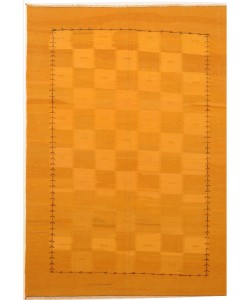
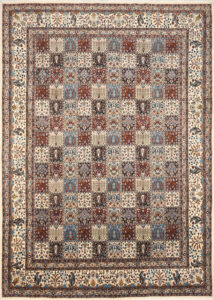
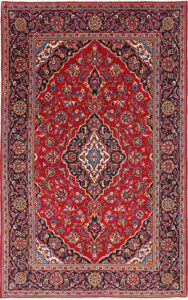
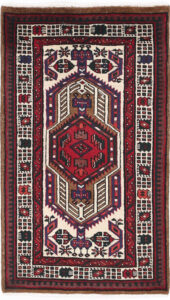
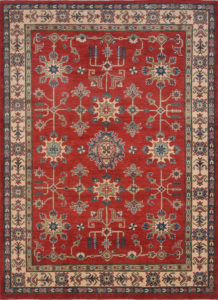

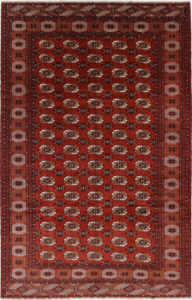
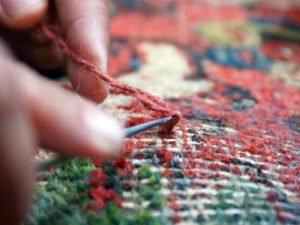

14 thoughts on “Oriental Rug Repair Guide: Before & After”
I live in Tasmania and have a rug whose fringe is gone and the ends are starting to unravel. I bought the carpet on 1977 in Delhi and would like to get an estimate for its repair please
I think your rug need to add fake fringes if this rug made in India. we are in Torrance California if you are near our location call me at 310-539-9373.
I have 3 small/medium rugs which each have an inch-wide cut 10 inches from the edge. . Deliberate vandalism on otherwise perfect Afghan/Iranian rugs
What is the best way to secure the areas against unraveling?
Thanks for your help
Dear Ann,
Please email me pictures, and I will tell you the solutions.
info@catalinarug.com
We have one small frayed edge
Can it be repaired on-site? It is embroidered ?
Live in Manhattan upper west side
You could ask from a local dealer.
I have a rug that has a finished edge with a lot of stitching that is about 3/8 inch wide. In one area, it has a slit right between the stiching and the actual pattern part of the rug. Is it possible to “sew” those parts back together? I wish I could send you a picture to better explain what my problem is.
Please show your rug for a repair man to get advise
Hello is it possible to cut an oriental rug down to size to allow it to fit into a smaller room? We have a large hand knotted, flat wool rug that we love but it’s just too big for our new house.
Dear Wendy,
You couldn’t cut a rug that was made by hand and since you have Kilim if you send it to an expert repair man it may possible.
I have an Isfahan which is 100 or more years old. Is wool and silk on cotton and silk foundation. The foundation has gotten weak and the rug has some tears on the longer sides as the foundation is very weak and brittle. How can it be restored and the foundation strengthened?
Dear Omar
You could show your rug to an expert repair man I am sure it is possible to repair it.
Rose, what wools do you use to repair your rugs? I have a large inventory of Paternayan yarn, and have been contacted in the past by other vendors who are repairing oriental/Persian rugs.
Are you interested in any of the Paternayan or other wools that I have in stock for your repairs?
You can contact me at aniela0415@gmail.com
Thank you for your time, and the work that you continue to do, your website is great!
Have a wonderful day,
Dawn Rogers
Dear Dawn,
Thank you we don’t need now